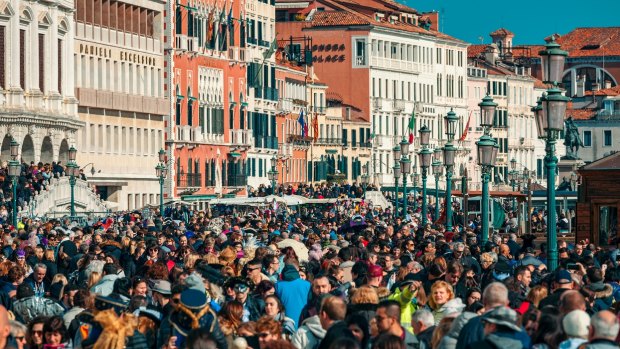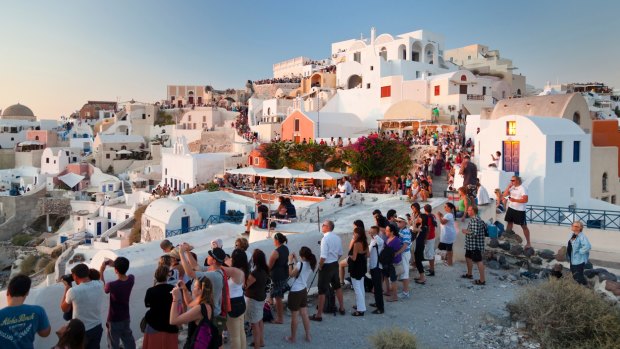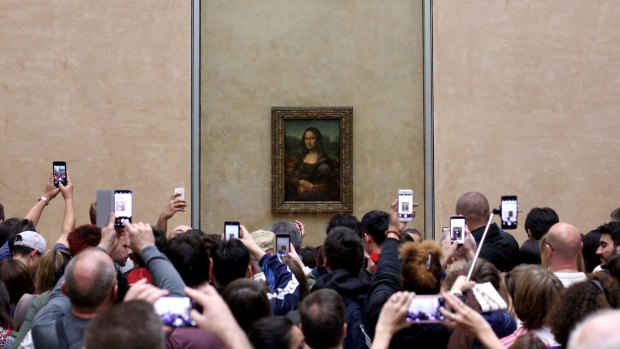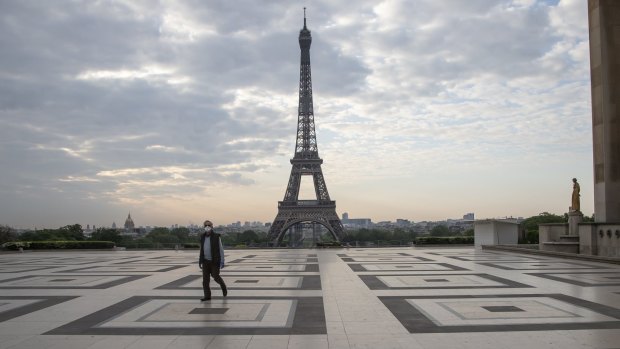This was published 3 years ago
Will the tourist hordes return? Coronavirus pandemic could be the end of overtourism
By Michael Gebicki
Right now you could fire a cannon across the forecourt of the Louvre in Paris without hitting anyone. The same goes for Stradun, the main street in Dubrovnik, and in Amsterdam's Dam Square the pigeons are looking bored and slightly less plump with no tourist scraps to feed on. Cannon play might be unwise in St Mark's Square in Venice since Veneto governor Luca Zaia has allowed residents to leave their homes and exercise freely starting from 6pm on April 27, in defiance of the tough coronavirus curbs imposed by Prime Minister Giuseppe Conte. Same in Prague, where non-essential travel was allowed from the same date, but foreigners have disappeared from the cities of Europe that have suffered most from overtourism.
Is this the end of the selfie-grabbing hordes that have incurred the wrath of the natives in Barcelona, Paris, Amsterdam and Venice? Dragging their wheelie cases along narrow, cobblestoned passages, snapping photos of the jamon hanging in the market and jacking up rents on city apartments? Cities that were unable, or unwilling, to deal with the problem of too many visitors are suddenly blissfully, eerily quiet.
The dearth of visitors shows in prices charged on Airbnb. In Rome, in mid-July, you can get a studio apartment near Piazza di Spagna for just under $100 per night. In Paris in the same month prices on Airbnb have crashed by 25-40 per cent. For $200 per night you've got your pick of smart one-bedroom apartments in the Marais district. Which leads to the question, is coronavirus the death knell for overtourism?

Crowds of tourists near San Marco Square, Venice.Credit: Getty Images
Maybe not. Tourism is astonishingly resilient, even when scorched by tragedy. A year after the Bali bombing more Australian tourists were visiting Indonesia than in the period immediately before the catastrophe. In the two years following the September 11 attacks in 2001, the number of passengers carried aboard the world's airlines slowed. Take US domestic and international air travel out of the statistics and the effect of the worst ever terrorist attack on the world's air travel numbers was negligible.
Will the hordes return?
The enduring appeal of chestnut trees blooming along Paris' Champs Elysees in spring, a stroll along Amsterdam's canals and watching the sunset from the cliffs of Santorini means the crowds will return, but it might be a trickle before it becomes a flood.

Credit: iStock

Tourists crowd the Mona Lisa at the Louvre, Paris.Credit: iStock
Case in point – New Zealand. Much has been made of the success of New Zealand in whipping coronavirus to a standstill, and tourism authorities are talking up the possibility of trans-Tasman travel resuming in the not-so-distant future. Prime Minister Jacinda Ardern appears sympathetic but indicated the welcome mat might only roll out initially for Australian residents with families in NZ, and who would be prepared to endure a two-week quarantine.
In Europe, optimism is in short supply in the tourism sector. Lorenza Bonaccorsi, Undersecretary at the Italian Ministry of Cultural Heritage and Activities, which oversees the country's tourism, said as much when she declared recently that 2020 might as well be written off.
In an address to the French nation, President Emmanuel Macron made it clear that while some businesses would be reopening on May 11, bars, cafes, restaurants and other tourist amenities would not. Jean-Pierre Mas, president of the country's travel agencies association and Rene-Marc Chikli, president of the Tour Operators Union, representing 3500 companies with 35,000 employees, declared that they did not anticipate a resumption of tourism activity before 2021.

The world is loosening the shackles with small, incremental changes that allow authorities to reimpose restrictions if coronavirus makes a resurgence. The template for tourism is the same.
But once confidence returns, when a cure for coronavirus is found, when quarantine becomes a memory, expect a tsunami of visitors and neither city authorities nor politicians will do anything to stem the tide. Why would they? Faced with hoteliers, waiters, restaurateurs, taxi drivers and gondola paddlers whose livelihoods have been eviscerated, the impetus to get the economic wheels turning once again will be unstoppable. For all the angst that overtourism causes to locals the voices of moderation will be drowned out.
What about tourism from China?
Tourism from mainland China is the engine room that has propelled the tourism boom over the past decade. In 2009, 47.7 million mainland Chinese travelled overseas. A decade later that figure was 166 million. Since 2013, more Chinese have travelled overseas than any other nationality. That's even more astonishing considering that only around 10 per cent of the country's population holds a passport. Not only do they travel in greater numbers than any other nationality, Chinese nationals spend more per person than anyone else which makes this such an attractive market. Pre-coronavirus research from travel industry intelligence site Skift predicted that 286 million mainland Chinese would travel abroad by 2029.
Chinese tourists are not a major cause of overtourism in Europe. The most popular destinations for Chinese travellers are the South-East Asian countries. Chinese travellers rank in fifth place among the nationalities that visited Italy in 2018, barely a quarter of the number from Germany, and only just ahead of the Swiss. In 2018 just 2.2 million Chinese nationals visited France, a tiny fraction of the country's 90 million foreign visitors in that year.
China could quickly recover its impetus as the dynamo of world tourism. The country began easing its lockdown restrictions at the end of March, with Wuhan following in early April. Almost immediately crowds besieged some of the country's famous beauty spots, desperate for fresh air and wild places. In Shanghai the Bund waterfront was crowded with shoppers and Beijing's parks were packed. Barring another wave of infections, that suggests Chinese tourists will be at the forefront when international travel becomes safe.
What about the cruise industry?
Big cruise vessels have copped much of the blame for overtourism. That's unfair in some cases. Cruise ship visitors were only about 10 per cent of the 30 million visitors who descended on Barcelona in 2019, although in Venice and Dubrovnik the proportion is far higher. It's the fact that each ship discharges several thousand visitors all at once, many of whom will stroll about within a small area, that makes them seem a heavyweight presence.
There's a big question mark over the recovery of the cruise industry. Although many of the big operators have cruises scheduled to depart in May and June, it might be a full year before the memory fades of ships with thousands of passengers locked in their cabins, and hundreds of coronavirus cases, and that's assuming no further misadventures.
The era of overtourism isn't over, it's just taken a break.
See also: Fairytale village once swamped with tourists begs for their return
Sign up for the Traveller newsletter
The latest travel news, tips and inspiration delivered to your inbox. Sign up now.